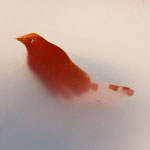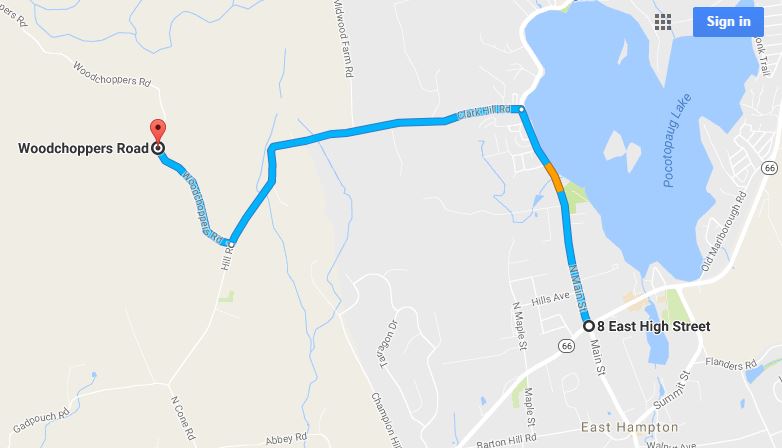 Agate cab, Frankl Rossi
Clark Hill Quarry Information
Agate cab, Frankl Rossi
Clark Hill Quarry Information
The Clark Hill Quarries are located in the Meshomasic State Forest off of
Woodcutter's Road. Look for the State Forest Entrance sign on Clark Hill
Road, East Hampton. Collecting is allowed by STATE PERMIT ONLY!

*** click here for driving directions via google maps ***

Based on my experience, these quarries (State Forest Quarry #1 and the
Nathan Hall Quarry) are quite productive! They have produced two of my
best self-collected pieces and many other fine examples of simple pegmatite
minerals. In particular, sharp muscovite crystals are very common at
the Hall Quarry and the large, dark almandine garnets from there, although
fairly rare, are awesome. I tested 7 garnets from Nathan Hall and 1 from
SFQ#1 using x-ray fluorescence to determine the metal content and all
8 proved to be almandine, though rather impure with the iron content
ranging from 77 to 53% relative to total Fe and Mn content. The black
stain results from the Mn content but there is not enough Mn to call
the garnets spessartine. Annite (fka biotite) is also common, mostly
in bladed crystals up to several feet long. Beryl is uncommon, but
crystals can be large, gemmy, and terminated and vary in color from
yellow through green to aqua. Zircon, uranium minerals (beautiful
autunite and torbernite halos around altered uraninite), and
fluorapatite are sprinkled throughout. Albite is abundant; sheaf-like
crystal aggregates with muscovite are found on pocket wall fragments
at SFQ#1. Microcline occurs as small pocket crystals (SFQ#1) or
in very large matrix crystals. Unfortunately much schorl tourmaline
has altered to muscovite, but there are interesting tapered pseudomorphs
similar to those from Wentworth, NH. Very nice pocket smoky quartz
has been found at SFQ#1 and massive quartz, which encloses the
sharp micas and matrix microclines, is very abundant at Hall, but
good crystals there are usually pocket micros. Although tiny
columbites are common, large ones are very rare and when you find
one, you will remember every part of the experience! These quarries
are full of surprises for the persistent collector. More recently,
another pegmatite near the intersection of Woodchopper's Road and the
logging road that leads to the quarries was uncovered by logging
activity and the core zone has been prospected, yielding many beryls
and some good garnets and columbites.
Based on the few references, the Hall Quarry appears to have operated
completely before 1922 (see below). There is nothing specific in the
mineralogical literature, but presumably it was quarried for feldspar
and/or mica. The F. W. Beers County Atlas of Middlesex, Connecticut,
published in 1874, shows a large rectangle of land north of Clark Hill
Road owned by "N. Hall". The Hall Cemetery is on Clark Hill Road near
the entrance to Woodchopper's Road. I have found remnants of an old,
late 19th century chewing tobacco hip pocket can, but also more recent
artifacts like a corroded Gablinger's beer can (the first lite beer!)
and a Cott soda bottle.
SFQ#1 was quarried for mica and feldspar for only a few months in 1942
and 1943. Presumably the low muscovite mica content (see below) and
high annite mica content in the graphic granite, which is abundant in
the dumps and is typically shipped for ceramics, make this deposit
uneconomic. Even a small amount of iron-rich minerals in the feldspar
results in brown staining of the ceramic glaze.
See mindat pages for more info:
http://www.mindat.org/loc-9660.html,
http://www.mindat.org/loc-29586.html
Note: These quarries should not be confused with State Forest Quarry #2,
which is located along Mine Brook SW of the cobalt mines. SFQ#2 is the
locality for many rare phosphate minerals similar to those found at the
Palermo Mine in North Groton, NH.
--------------------***-------------------
The Lapidary & Mineral Society of Central Connecticut